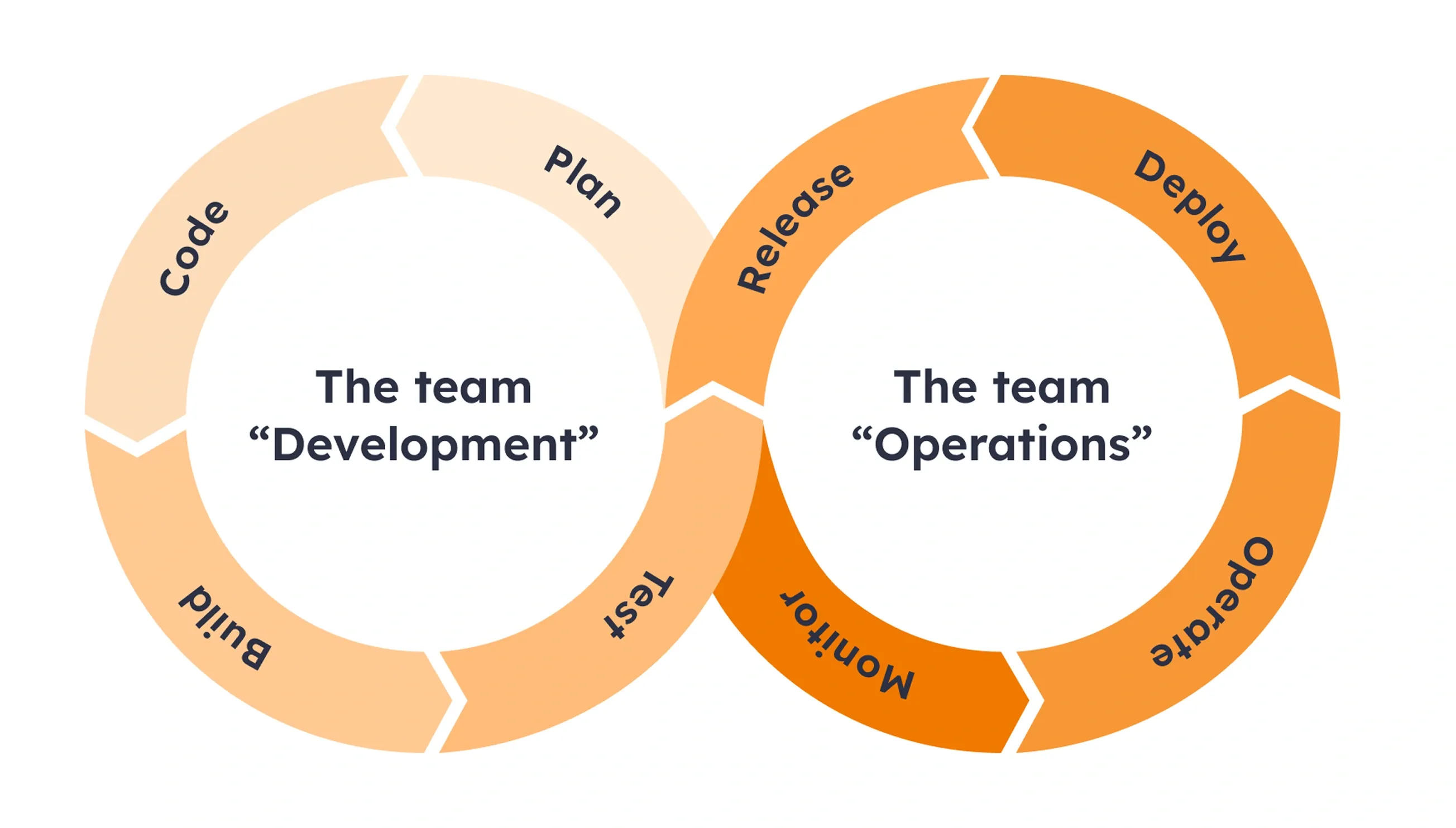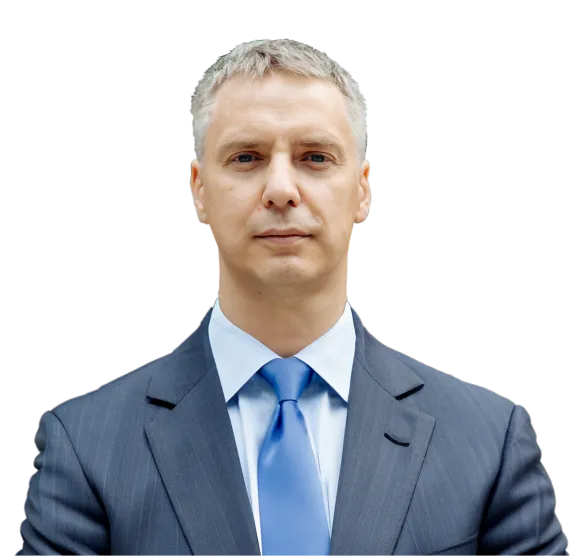
What is DevOps in software development?

Dmitry Bunas
Head of DevOps Department
When I explain DevOps to friends outside IT, I often use a racing analogy. Developers are like the drivers pushing the car to its limits, while operations are the pit crew making sure the engine runs smoothly, tires are changed, and everything is safe. Earlier in IT, opposite the racing, these two groups worked almost separately, slowing down production. DevOps software engineering is merging them together as one team where every move is synchronized for speed, reliability, and “winning” results.
What software DevOps really is
At its core, DevOps in software engineering is a way of organizing how software is made and run.
DevOps = Development + Operations.
When a company builds an app or a website, there are usually two main groups:
People who create the program (developers),
And people who keep it working (operations).
DevOps meaning in software – constant, ongoing collaboration between them. They do their job using shared (usually automated) tools and clear communication.

DevOps infinity loop
The team “Development”: | The team “Operations”: |
|---|---|
Plan – planning and requirements definition. | Release – releasing the software. |
Code – writing code. | Deploy – deploying software to production. |
Build – building and compiling the software. | Operate – operating and managing software in production. |
Test – testing the software for quality assurance. | Monitor – monitoring performance and issues. |
Core practices of DevOps software engineering
To make this work, DevOps relies on a cycle of practices that reinforce each other (actually, this topic is more closely related to the roles and responsibilities of a DevOps engineer, where you can learn about how these practices work in real projects):
Continuous integration/Continuous delivery (CI/CD)
Think of this as an assembly line for code. Every change a developer makes is automatically built, tested, and (if it passes) deployed. No waiting weeks for a big release – updates can go live daily or even hourly.
Infrastructure as Code (IaC)
Instead of manually configuring servers (like setting them up one by one), DevOps software engineering teams describe infrastructure with code. This makes it possible to recreate environments instantly, scale them up or down when needed, and keep everything consistent.
Automated testing
Every feature, from a small button click to a large payment flow, is automatically tested. This ensures that when new code is added, it doesn’t break existing functionality. It’s like running a safety check before every lap of the race.
Monitoring and observability
Monitoring gives software DevOps teams real-time data on performance, errors, and user experience. Observability goes further by showing not just what happened, but why it happened.
Security integration
In the past, security checks happened at the very end. In DevOps, they’re built into every stage – scanning code, checking configurations, and protecting data continuously. That way, speed doesn’t come at the cost of safety.
Together, all DevOps and software engineering practices, tools and actions create a continuous feedback loop where software is always improving.
Want clearer insights?
Our experts will walk you through every detail of DevOps in software development and answer all your questions.
Dmitry Bunas
Head of DevOps Department



Why DevOps in software engineering matters
DevOps software development is a competitive edge. It reduces costs by automating routine tasks, accelerates time-to-market, and improves customer satisfaction. Companies using DevOps can innovate faster while keeping systems stable and secure.
But the impact goes far beyond business:
For developers | For operations teams | For end users |
|---|---|---|
DevOps means less time spent on repetitive manual work and more focus on real problems. Automated pipelines, clear feedback, and shared responsibility make work smoother. | DevOps creates transparency and predictability. Instead of constant firefighting, they work with stable, automated systems that are easier to monitor and maintain. | DevOps in software development delivers a seamless experience: new features appear faster, apps stay responsive, and downtime is minimized. |
In short, DevOps and software engineering together don’t just transform how companies deliver digital value – they change how people build, maintain, and experience technology every day.
How DevOps success is measured
In strategy games, like chess, you know if your move worked by looking at the score. In DevOps, we use DORA (DevOps research and assessment) metrics as the scorecard:




The future of DevOps in software engineering
DevOps is constantly evolving. Analysts predict that the DevOps software development market will continue to expand rapidly in the coming years, driven by automation, cloud-native solutions, and the growing demand for faster, safer releases.

DevOps market size predictions
New practices like DevSecOps integrate security into every stage of development, catching vulnerabilities early. BizDevOps, on the other hand, brings business teams into the DevOps loop, aligning developers, operations, and decision-makers around shared KPIs, faster feedback, and measurable business outcomes.
Final thoughts
So, DevOps’ meaning in software engineering is more than a tool, a job title, and not just automation. It’s a mindset and a framework that unifies people, processes, and technology. Without it, software delivery is slow, fragile, and expensive.
For me, DevOps feels like a perfect blend of strategy, discovery, and endurance. It’s about making the right moves, learning along the way, and keeping the wheels spinning smoothly no matter the terrain.
If you’d like to see how these principles can be applied to your project, take a look at our DevOps services page.

Get a weekly dose of first-hand tech insights delivered directly to your inbox